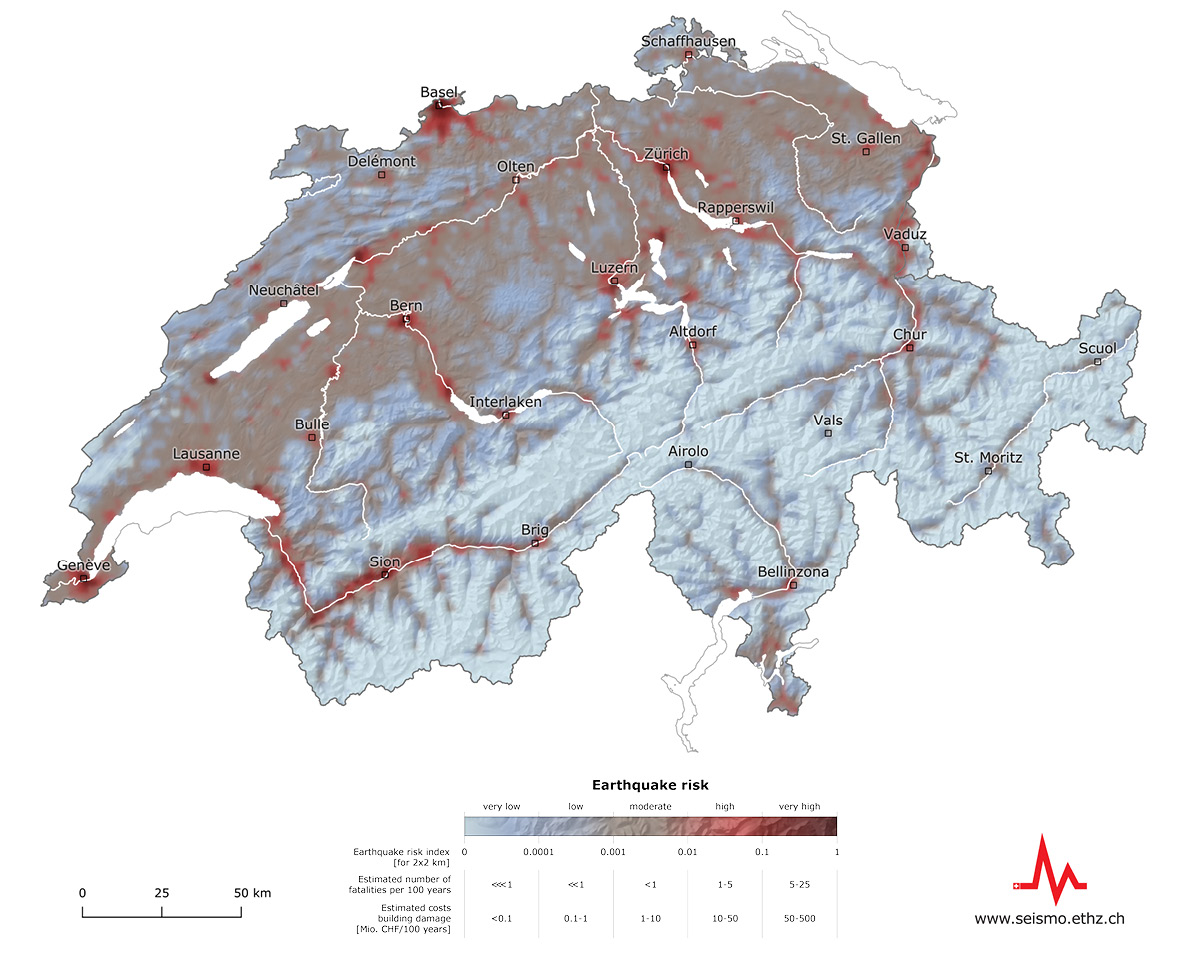Although earthquakes occur less frequently than other natural hazards in Switzerland, they can cause serious damage. According to the "National risk analysis report" (Disasters and Emergencies in Switzerland 2020" of the Federal Office for Civil Protection (FOCP), earthquakes are one of the greatest risks in Switzerland, along with pandemics and power shortages.
Earthquake risk describes the possible effects of earthquakes on buildings and the associated financial and human losses. It is composed of four factors:
- Earthquake hazard
- Local subsoil
- Vulnerability of buildings
- Affected people and assets
Over a period of 100 years, earthquakes can be expected to cause economic damage of CHF 11 to 44 billion to buildings and their contents alone. In total, up to 1,600 people would lose their lives and an estimated 40,000 to 175,000 would become homeless on a short-term or long-term basis. On top of this, there is damage to infrastructure and losses due to other effects of earthquakes such as landslides, fires or business interruptions. However, these are not yet included in the model. The risk is not evenly distributed over time, but is dominated by rare, catastrophic earthquakes that usually happen without warning.
The greatest earthquake risk is in the cities of Basel, Geneva, Zurich, Lucerne and Bern, in that order. Although the earthquake hazard in these regions differs, all five cities have, by virtue of their size, a large number of people and assets that would be affected by an earthquake. In addition, these cities have many buildings, some particularly vulnerable and often located on soft ground that amplifies seismic waves.
Use our interactive tool to determine by approximation your personal earthquake risk based on four factors and find out how to reduce it.
Learn more
